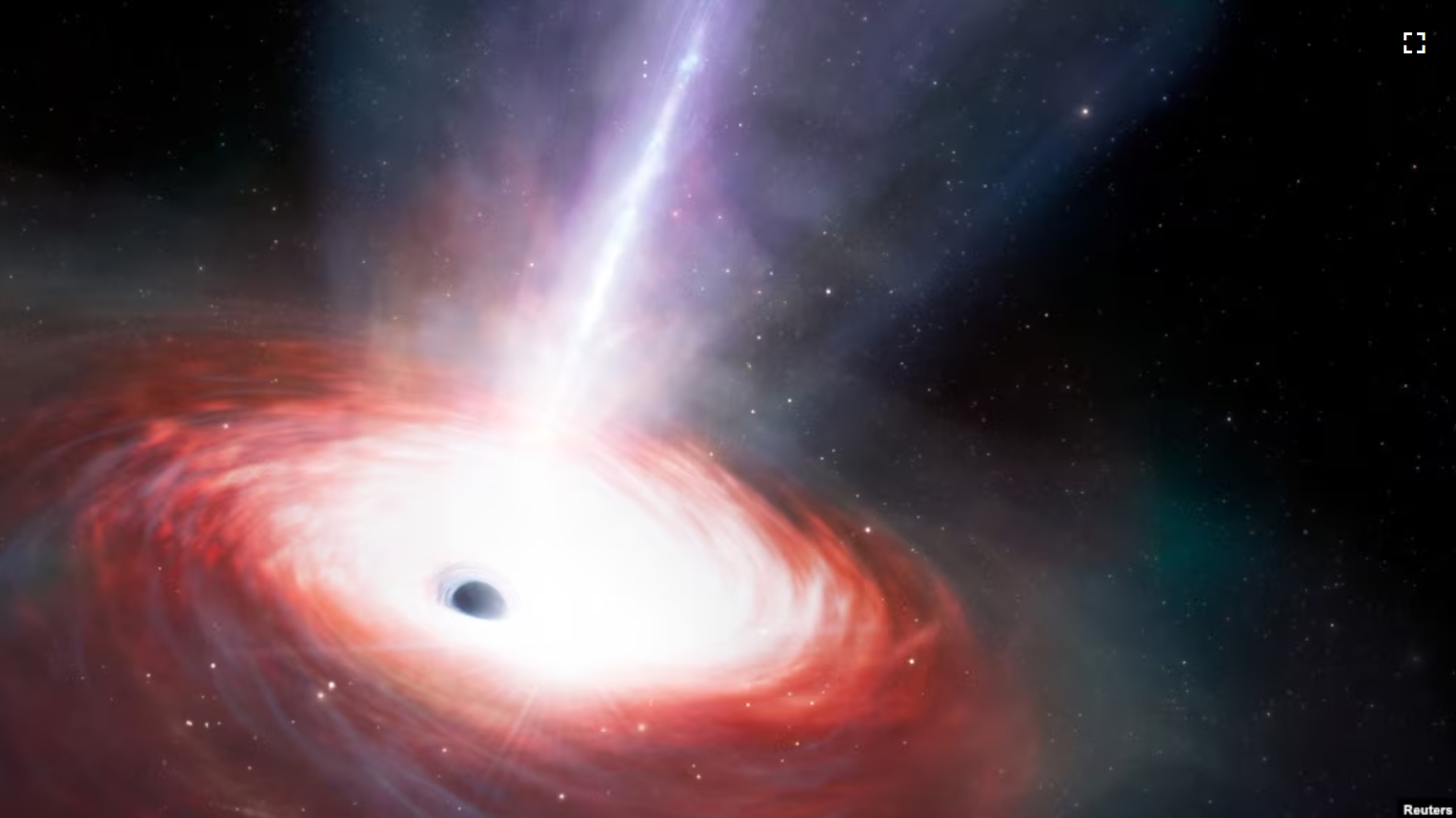Researchers have observed a large black hole that gained mass at a rate much faster than scientists had thought possible.
New observations from the Webb telescope involve the largest kind of black hole, a supermassive black hole. It is called LID-568. Scientists say it existed when the universe was about 11 percent of its current age.
Background of a black hole
Black holes are extremely dense objects with gravity so strong that not even light can escape. With their powerful gravitational pull, they grow in mass by taking in material such as gas, dust and stars that are nearby.
A supermassive black hole about four million times the mass of the sun, called Sagittarius A*, is at the center of our Milky Way galaxy. Supermassive black holes are believed to be at the center of most galaxies.
Since NASA’s James Webb Space Telescope started operating in 2022, researchers have been surprised to find supermassive black holes in the early universe. Researchers had believed that it takes a longer amount of time to gather such huge amounts of mass.
New observations of one early black hole give information about how this growth took place.
“The existence of supermassive black holes in the early universe challenges our current models of black hole formation and growth,” said Hyewon Suh of the International Gemini Observatory in Hawaii and the U.S. National Science Foundation’s NOIRLab. Suh was the lead writer of the study detailing the findings in the scientific publication Nature Astronomy.
The supermassive black hole LID-568 existed about 1.5 billion years after the Big Bang. The Big Bang, the event that started the universe, took place around 13.8 billion years ago.
LID-568 has a mass 10 million times greater than the sun, or two- and one-half times the mass of Sagittarius A*. The researchers do not yet know the mass of its home galaxy.
The Webb telescope showed LID-568 gaining mass at a rate faster than scientists had thought possible. LID-568 appeared to be consuming infalling material – known as accretion – at more than 40 times the previously believed maximum for such activity.
This maximum is known as the Eddington limit.
Exceeding the Eddington Limit
Early black holes are thought to have started in one of two ways. They could have begun after the explosive death of the universe’s first generation of stars or through the collapse of large clouds of gas present in the early universe.
The discovery of LID-568 suggests that a lot of mass growth can take place during one time, or episode, of rapid accretion, Suh suggested.
A good sign of a growing supermassive black hole is emission of X-rays, high-energy electromagnetic radiation with very short wavelengths. Material moving around a supermassive black hole is superheated and glows strongly in X-ray wavelengths before disappearing in the black hole.
The researchers first spotted LID-568 using NASA’s Chandra X-ray Observatory. They then studied it more closely with the Webb space telescope.
The Webb observations suggest the existence of a faster way for black holes to take in material.
Suh described LID-568 as “remarkable.” She added, “We don’t know yet how LID-568 is able to exceed the Eddington limit. To investigate further, we need more data, so we are planning to conduct follow-up observations with Webb.”
I’m John Russell.
Will Dunham reported on this story for Reuters. John Russell adapted it for VOA Learning English.
______________________________________________
Words in This Story
supermassive – adj (describes black hole) the largest kind of black hole
challenge – v. to dispute or question something
consume –v. to take in, use up or eat
infalling – adj. moving under the influence of gravity toward an object (such as a black hole)
accretion – n. the process of growth or enlargement by a gradual buildup
emission –n. the process of releasing or sending out radiation
conduct –v. to carry out
